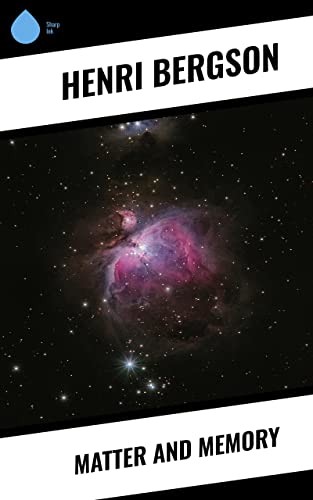

Matter and Memory
Henri Bergson, Nancy Margaret Paul, W. Scott Palmer
4.11(2601 readers)
Matter and Memory presents an analysis of the classical philosophical problems concerning this relation. Within that frame the analysis of memory serves the purpose of clarifying the problem. Matter and Memory was written in reaction to the book The Maladies of Memory by Théodule Ribot, which appeared in 1881. Ribot claimed that the findings of brain science proved that memory is lodged within a particular part of the nervous system; localized within the brain and thus being of a material nature. Bergson was opposed to this reduction of spirit to matter. Defending a clear anti-reductionist position, he considered memory to be of a deeply spiritual nature, the brain serving the need of orienting present action by inserting relevant memories. The brain thus being of a practical nature, certain lesions tend to perturb this practical function, but without erasing memory as such. The memories are, instead, simply not 'incarnated', and cannot serve their purpose.
Publisher
Sharp Ink
Publication Date
3/24/2023
ISBN
9788028294731
Pages
247
Categories
About the Author

Henri Bergson
Popular and accessible works of French philosopher and writer Henri Louis Bergson include
Creative Evolution
(1907) and
The Creative Mind
(1934) and largely concern the importance of intuition as a means of attaining knowledge and the élan vital present in all living things; he won the Nobel Prize of 1927 for literature.
Although international fame and influence of this late 19th century-early 20th century man reached heights like cult during his lifetime, after the Second World War, his influence decreased notably. Whereas such thinkers as Maurice Merleau-Ponty, Jean Paul Sartre, and Lévinas explicitly acknowledged his influence on their thought, Bergsonism of Gilles Deleuze in 1966 marked the reawakening of interest. Deleuze recognized his concept of multiplicity as his most enduring contribution to thinking. This concept attempts to unify heterogeneity and continuity, contradictory features, in a consistent way. This revolutionary multiplicity despite its difficulty opens the way to a re-conception of community, or so many today think.
Although international fame and influence of this late 19th century-early 20th century man reached heights like cult during his lifetime, after the Second World War, his influence decreased notably. Whereas such thinkers as Maurice Merleau-Ponty, Jean Paul Sartre, and Lévinas explicitly acknowledged his influence on their thought, Bergsonism of Gilles Deleuze in 1966 marked the reawakening of interest. Deleuze recognized his concept of multiplicity as his most enduring contribution to thinking. This concept attempts to unify heterogeneity and continuity, contradictory features, in a consistent way. This revolutionary multiplicity despite its difficulty opens the way to a re-conception of community, or so many today think.
Questions & Answers
Reader Reviews
Loading comments...